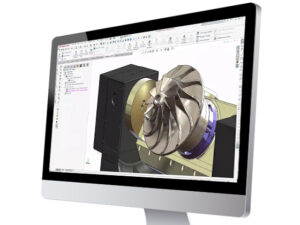This blog was originally authored by Dave Vedder, former Vice President of Engineering & Technology at GSC.

Over my 37+ years in manufacturing, I have overseen several CAD system implementations and optimizations within a global environment. Some have gone smoother than others, but I’ve learned a lot of great lessons along the way to help you get the most value out of your CAD system.
The 5 Best Practices
1. Invest in Training
All users should be professionally trained to ensure they have the skills needed to support and drive your business goals. Training also ensures your entire team possesses the same knowledge and can speak the same language.
It’s easy to overlook your more experienced SOLIDWORKS users. It’s important to invest in your engineers, no matter their experience. Some users may be self-taught or may need a refresher from their previous software training.
For instance, I once hired an engineer with 10 years of experience using SOLIDWORKS; however, he had never been formally trained. This individual attended a SOLIDWORKS Essentials class and he was grateful to learn so many new things that could help him streamline his process and be more efficient.
In my experience, a minimum of two to three weeks of professional training per employee provides the knowledge to be more efficient, to work faster, and to be more accurate.
2. Appoint a Purchased Part Librarian
As the official gatekeeper for purchased parts, the part librarian ensures all models meet outlined standards, fit within the part families, and the metadata is correct. This ensures your product data is reliable and is easily reused, saving many hours of rework time.
3. Appoint a CAD Administrator
I recommend both a primary CAD administrator, as well as a backup administrator, appropriate to the size of your company and the importance of CAD in your business (e.g., part-time to full-time to multiple people). Again, it’s incredibly important the primary and backup CAD administrators receive professional training to ensure they are equipped to do their job to meet the needs of the business.
4. Develop CAD Modeling and Design Standards to Streamline your Processes
But, don’t just stop there. Ensure you and your team consistently review and strive to continuously improve those standards. A great way to do this is through input from a primary power user and/or by creating a CAD steering committee to focus on continuous improvement.
5. Strengthen your Engineering Leadership
Ensure you have a strong understanding of 3D design and data management concepts and strategy. As a leader, it is important to set the CAD and engineering system vision and lead the team toward accomplishment. Do not delegate this responsibility, because it’s too important. The goal is to identify and eliminate waste in your New Product Development pipeline.
In Conclusion
The root cause of CAD system issues (low productivity and/or performance) is almost always found in these five best practices. Our experts at GSC have completed hundreds of successful CAD implementations and are available to assist you with any of your CAD software or engineering consulting needs.
Share
Meet the Author

